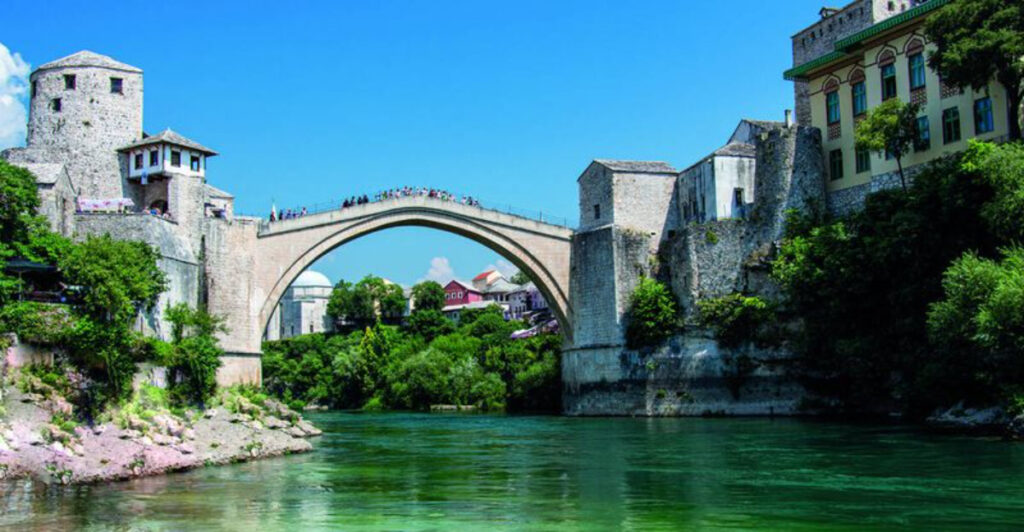Standing gracefully over the emerald waters of the Neretva River, the Old Bridge of Mostar (Bosnia and Herzegovina) has witnessed the rise and fall of empires for over 450 years.
This remarkable stone arch has survived Ottoman rule, two world wars, and even its own destruction, only to rise again as a symbol of hope and unity.
More than just a crossing point, this bridge tells an extraordinary story of human resilience, architectural genius, and the power of international cooperation to heal wounds that seemed impossible to mend.
1. A Sultan’s Grand Vision Brought It to Life
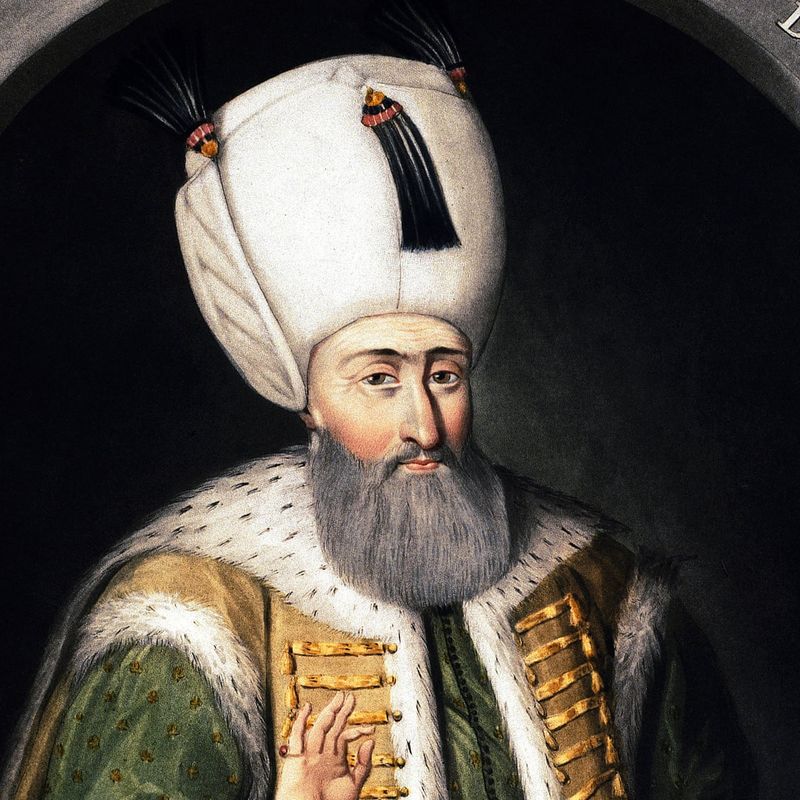
Back in 1566, when Suleiman the Magnificent ruled the vast Ottoman Empire, he decided Mostar needed something spectacular. The wooden suspension bridge that previously connected the two sides of the city simply wasn’t impressive enough for such an important trade route.
Suleiman commissioned this masterpiece to showcase Ottoman engineering prowess and strengthen connections across his empire. The project took nine years to complete, requiring massive resources and incredible skill.
Today, visitors can still admire the sultan’s vision made real in stone, standing as a testament to the ambition and architectural mastery of the Ottoman era.
2. An Engineering Genius Feared His Own Creation
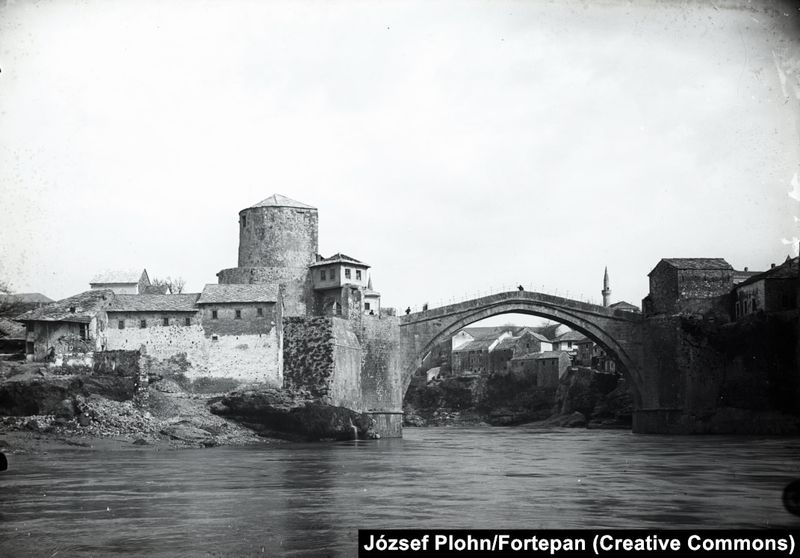
Mimar Hayruddin, the brilliant architect behind this wonder, was a student of the legendary Mimar Sinan. Despite his training under the master builder of the Ottoman Empire, Hayruddin reportedly spent sleepless nights worrying his bridge might collapse.
Legend tells us he was so anxious about the structure’s stability that he prepared for exile, fearing the sultan’s wrath if it failed. His fears proved completely unfounded.
The bridge stood strong for 427 years, surviving earthquakes, floods, and countless storms. Hayruddin’s masterpiece became proof that sometimes our greatest achievements come from pushing beyond our comfort zones and taking calculated risks.
3. Breaking Records in the 16th Century
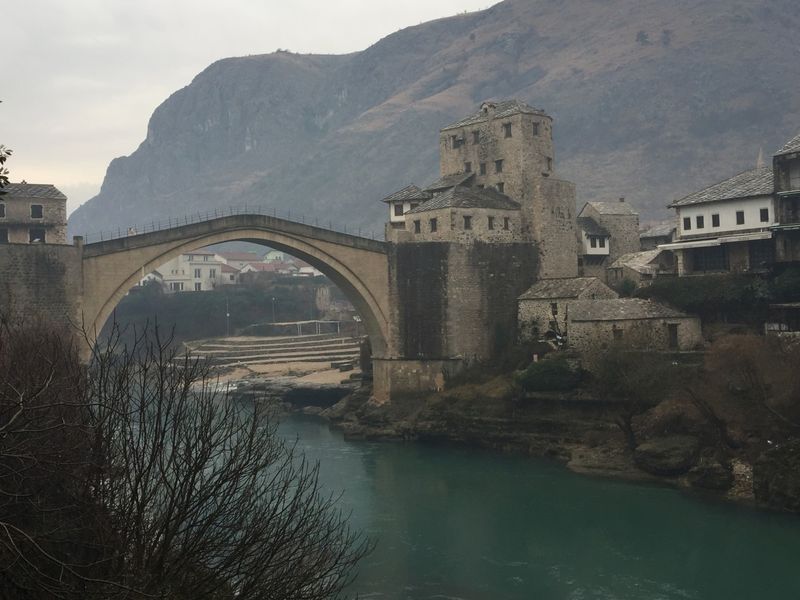
When completed, Stari Most shattered engineering expectations with its impressive 28.7-meter span and soaring 20-meter height. These dimensions made it one of the widest single-span stone arch bridges anywhere in the world during its era.
The achievement was particularly remarkable considering the tools and techniques available in the 1560s. Ottoman engineers had to rely on mathematical precision, quality materials, and incredible craftsmanship rather than modern machinery.
Even today, engineers marvel at how Hayruddin calculated the perfect arch curve and keystone placement. The bridge’s proportions remain aesthetically pleasing and structurally sound, proving that great design transcends time and technology.
4. The Bridge Keepers Gave Mostar Its Name
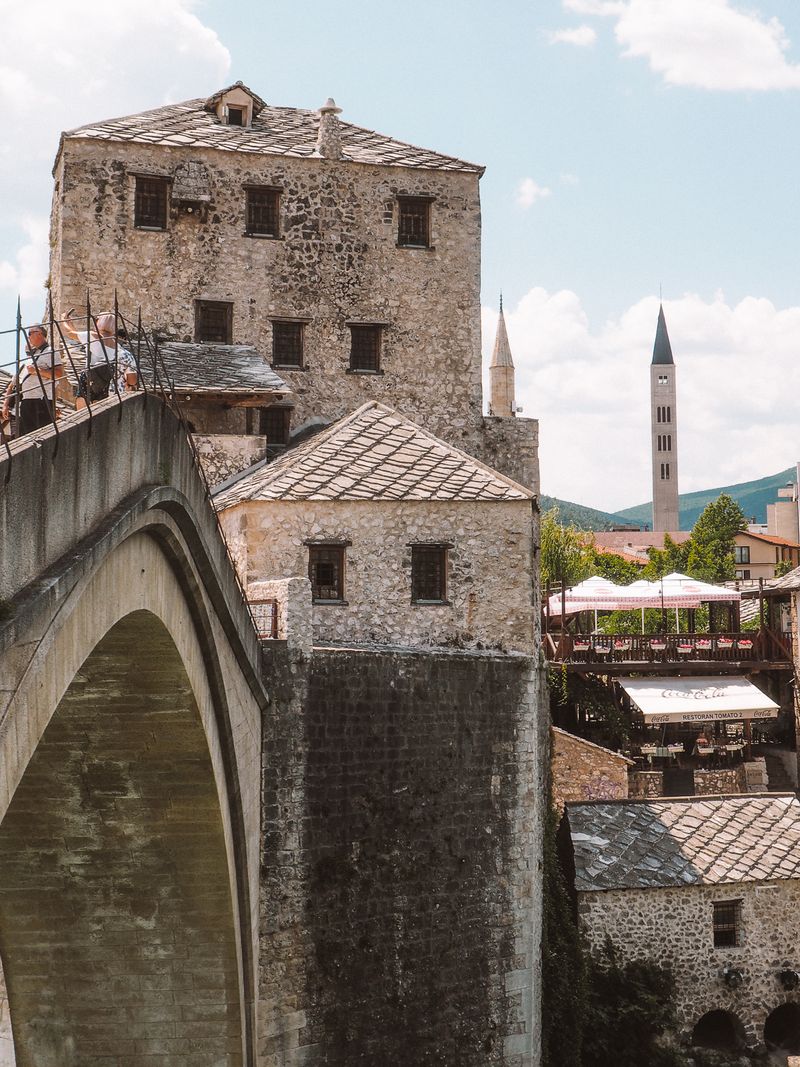
“Stari Most” literally translates to “Old Bridge,” but the city’s name comes from something even more interesting. Mostar gets its name from the “mostari” – the dedicated bridge keepers who guarded this crucial crossing for centuries.
These guardians collected tolls, maintained the structure, and protected travelers from bandits. They lived in small towers on either side, keeping watchful eyes on everyone who crossed.
The mostari became such an integral part of the community that eventually the entire settlement adopted their name. Today, every time someone says “Mostar,” they’re honoring these forgotten guardians who dedicated their lives to protecting this architectural treasure.
5. A Lifeline for Trade and Culture
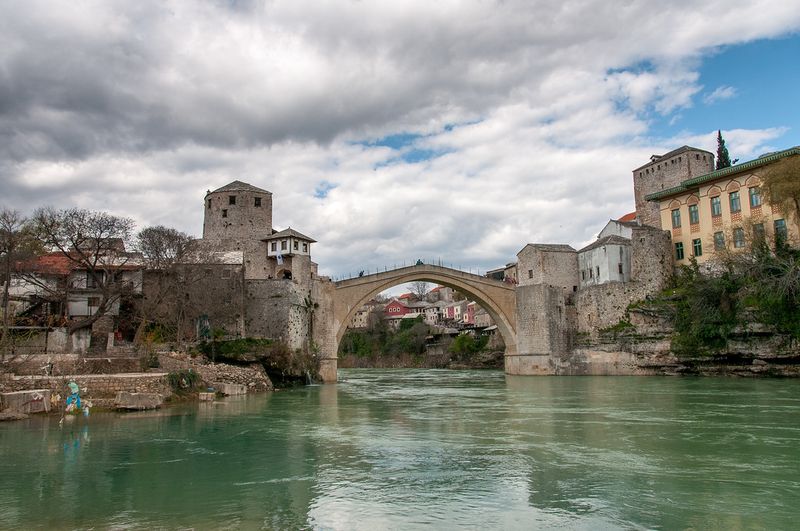
For over four centuries, this bridge served as far more than a river crossing. It became the beating heart of a multicultural city where Christians, Muslims, and Jews lived, worked, and traded together peacefully.
Merchants from across the Balkans brought goods over this bridge, creating a bustling marketplace atmosphere. The surrounding bazaar filled with the sounds of different languages, the aroma of spices, and the energy of international commerce.
Families from different religious backgrounds would meet in the middle, children played together on its stones, and lovers carved their initials into its walls. The bridge literally connected not just two riverbanks, but entire communities and cultures.
6. A Devastating Day That Shocked the World
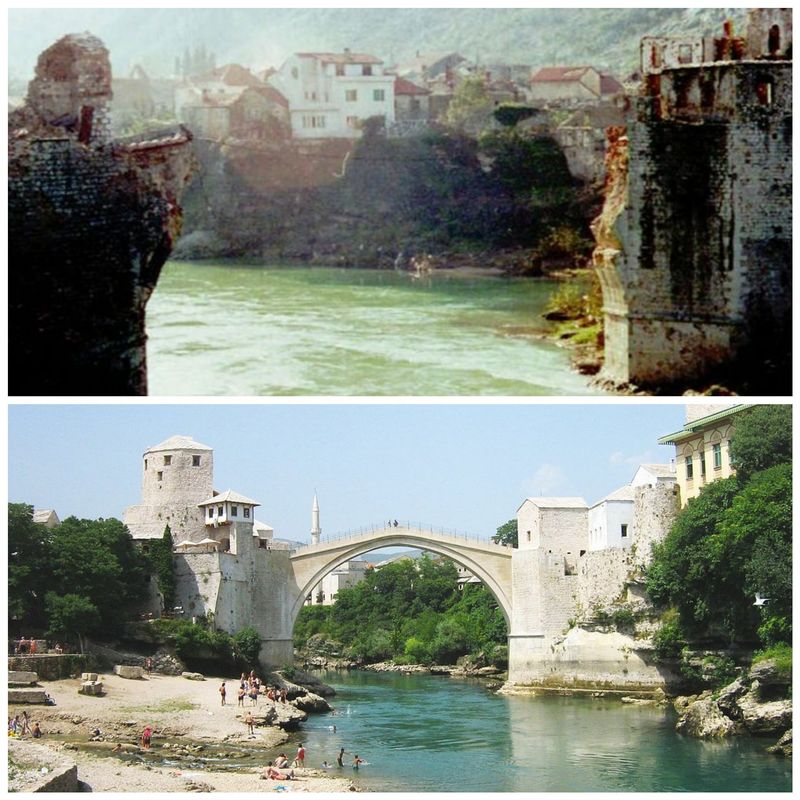
November 9, 1993, became one of the darkest days in Mostar’s history when artillery shells deliberately targeted the ancient bridge. After withstanding 427 years of natural disasters and conflicts, it took just a few hours of bombardment to bring down this symbol of unity.
Television cameras captured the heartbreaking moment when the bridge collapsed into the Neretva River. The images spread globally, showing the world how cultural heritage becomes a casualty of war.
Local residents wept openly as their beloved bridge crumbled. Many described feeling like they had lost a family member, not just a building. The destruction represented the shattering of centuries of coexistence and shared history.
7. International Heroes Answered the Call
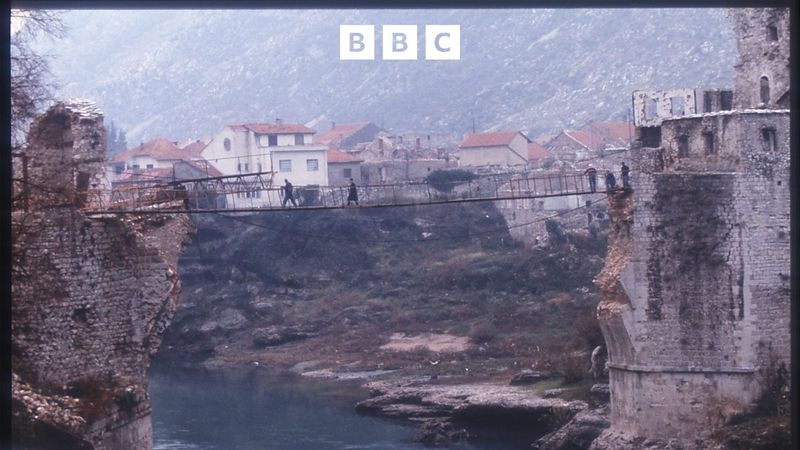
When news of the bridge’s destruction spread worldwide, an unprecedented international response emerged. UNESCO, the World Bank, and governments from dozens of countries pledged resources to rebuild this symbol of cultural heritage.
Engineers and archaeologists worked tirelessly to recover original stones from the riverbed. Every piece was carefully catalogued and studied to ensure authentic reconstruction using traditional Ottoman techniques.
Countries that had never collaborated before found common ground in this project. Italian, Turkish, Croatian, and Bosnian experts worked side by side, proving that shared respect for cultural heritage can bridge even the deepest political divides. Their cooperation became as symbolic as the bridge itself.
8. A Celebration That United Nations
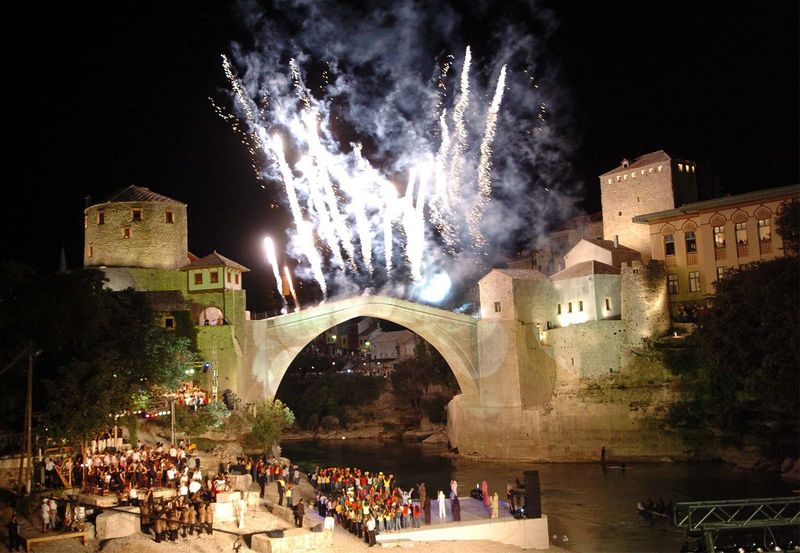
July 23, 2004, marked a historic day when the reconstructed bridge officially reopened with a ceremony that drew dignitaries from around the globe. The inauguration began with a traditional bridge dive, performed by a local daredevil to thunderous applause.
Fireworks illuminated the night sky while thousands of people from former enemy territories celebrated together. Presidents, ambassadors, and ordinary citizens stood side by side, witnessing the triumph of reconstruction over destruction.
The ceremony featured traditional music from all ethnic groups, multilingual prayers of blessing, and emotional speeches about reconciliation. Many attendees described feeling hope for the first time since the war ended, seeing their beloved bridge restored to its former glory.
9. Europe’s Most Bone-Chilling Waters Flow Below
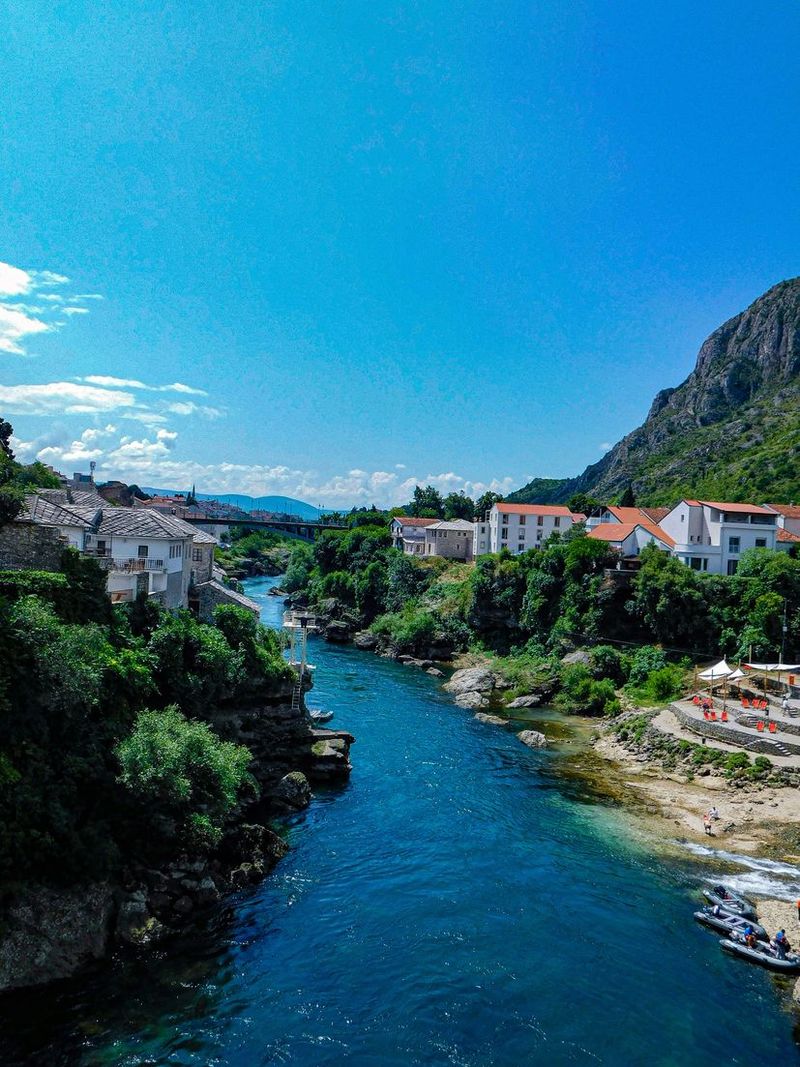
The Neretva River flowing beneath the bridge holds a surprising record – it’s officially Europe’s coldest river. Even during scorching summer heat when temperatures soar above 35°C, the water maintains a frigid 6-7°C temperature.
This icy temperature comes from the river’s source in mountain glaciers and underground springs. The constant cold creates a shocking contrast for anyone brave enough to take the traditional leap from the bridge.
Local divers have adapted to these harsh conditions over generations, but visitors often underestimate the brutal cold. The combination of a 20-meter fall and near-freezing water creates one of Europe’s most challenging diving experiences, making every successful jump a true test of courage and endurance.
10. UNESCO Recognition Sealed Its Global Importance
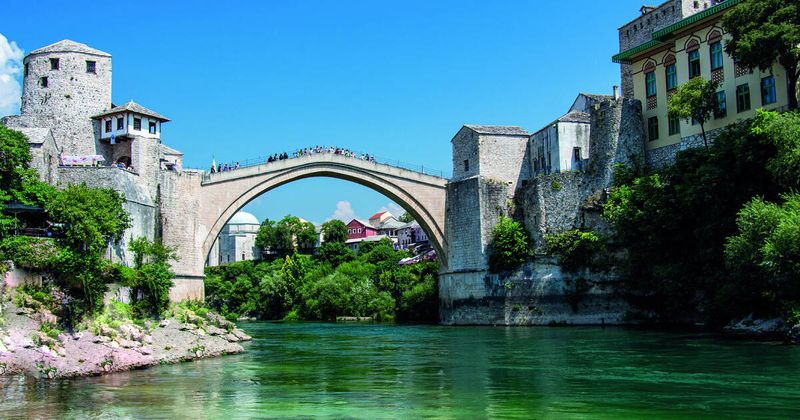
In 2005, just one year after reopening, the bridge and surrounding Old Town received UNESCO World Heritage Site status. This prestigious designation recognized not only the architectural marvel but also its profound symbolic meaning for humanity.
The UNESCO committee praised the bridge as an exceptional example of multicultural urban settlement and Ottoman civil engineering. They emphasized how its reconstruction demonstrated international cooperation and the universal value of cultural heritage.
This recognition ensures permanent protection and provides funding for ongoing maintenance. More importantly, it guarantees that future generations will learn about this bridge’s story of destruction, resilience, and rebirth as a lesson in both preserving history and building peace.
11. Former Enemies Built Peace Together
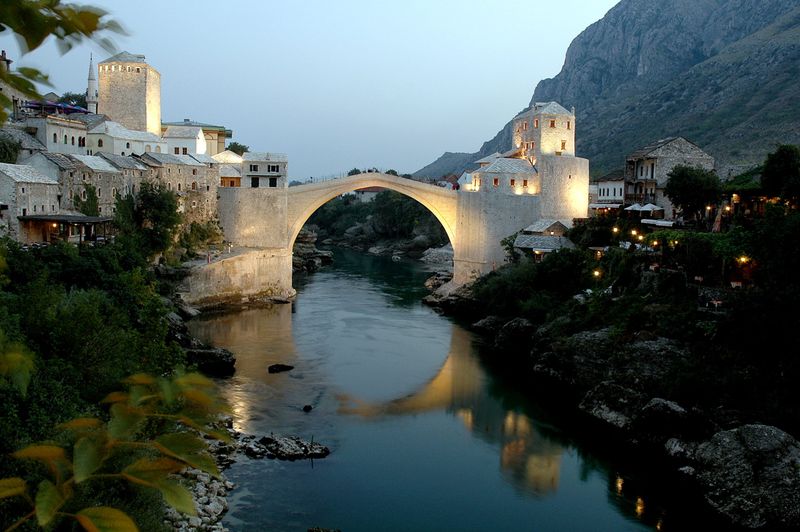
Perhaps the most remarkable aspect of the reconstruction wasn’t the engineering achievement, but the human one. Bosniaks, Croats, and Serbs who had been fighting each other just years earlier worked side by side to rebuild their shared heritage.
Construction crews included veterans from different sides of the conflict, supervised by international peacekeepers. Initial tensions gradually gave way to mutual respect as workers focused on their common goal of restoring the bridge.
Many participants described the project as therapeutic, helping them process trauma while creating something beautiful together. The bridge became a powerful metaphor for reconciliation, proving that people can choose cooperation over continued conflict when given meaningful opportunities to work toward shared objectives.
12. Daredevils Have Jumped for Centuries
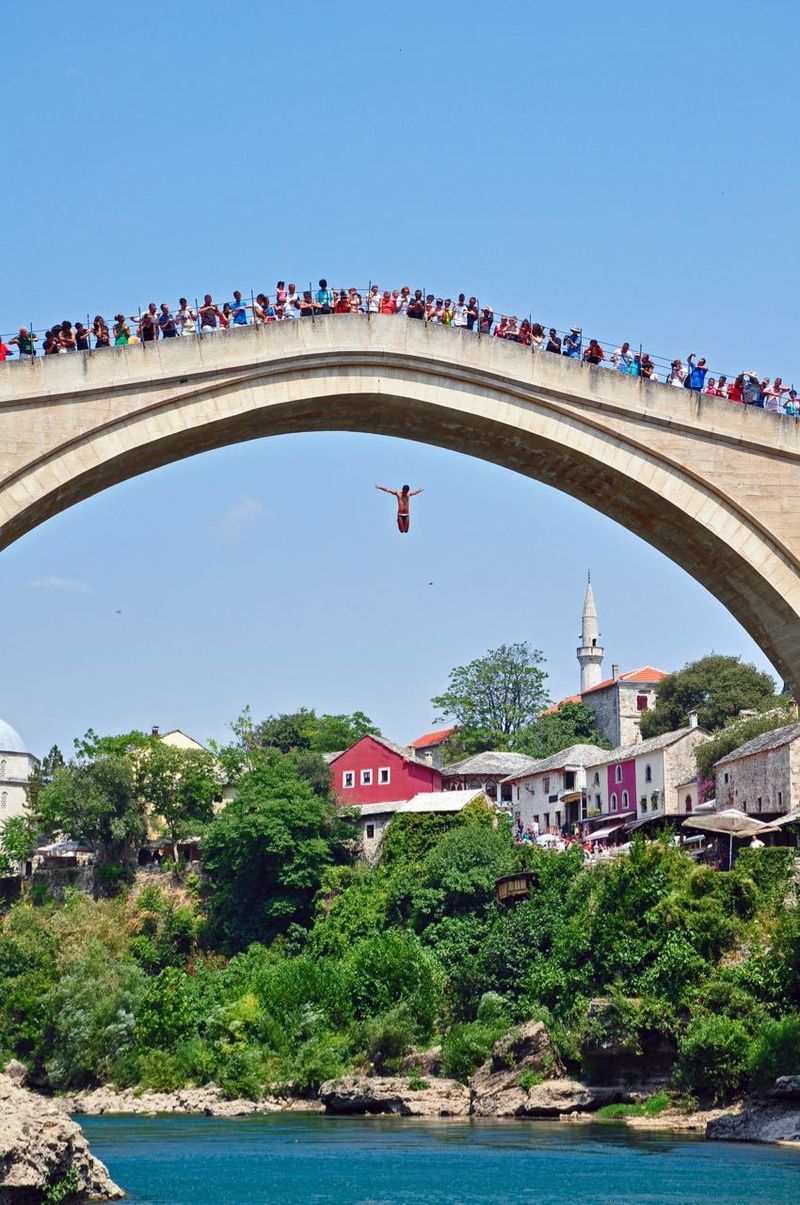
Bridge diving from Stari Most isn’t a modern tourist attraction – it’s a tradition stretching back over 400 years. Young men have been proving their courage by leaping into the icy Neretva waters since Ottoman times.
The jump requires perfect technique, incredible bravery, and years of training. Divers must hit the water at exactly the right angle to avoid serious injury from the 20-meter fall into the narrow river channel.
Local diving clubs maintain strict standards and training programs. Aspiring jumpers spend months learning proper form and building courage on smaller bridges before attempting the ultimate test. Each successful dive earns respect from the community and carries on a tradition that connects modern Mostar to its ancient roots.
13. Red Bull Transformed It Into a Global Stage
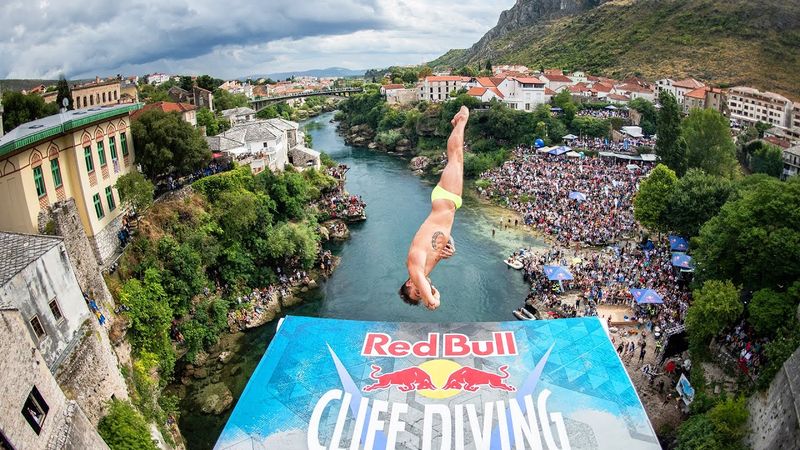
Since 2015, the Red Bull Cliff Diving World Series has regularly featured Mostar as a premier venue, bringing the world’s best divers to compete where locals have jumped for centuries. Elite athletes perform acrobatic feats that would make traditional divers gasp in amazement.
Professional competitors execute complex flips, twists, and rotations during their brief flight through the air. Judges score them on technique, difficulty, and execution while thousands of spectators cheer from the banks and bridge itself.
The event broadcasts globally, showcasing Mostar’s beauty and diving heritage to millions of viewers worldwide. Local traditional divers often participate alongside professionals, creating a unique blend of ancient tradition and modern sporting spectacle that celebrates both past and present.
14. A Beacon of Hope for Millions Worldwide
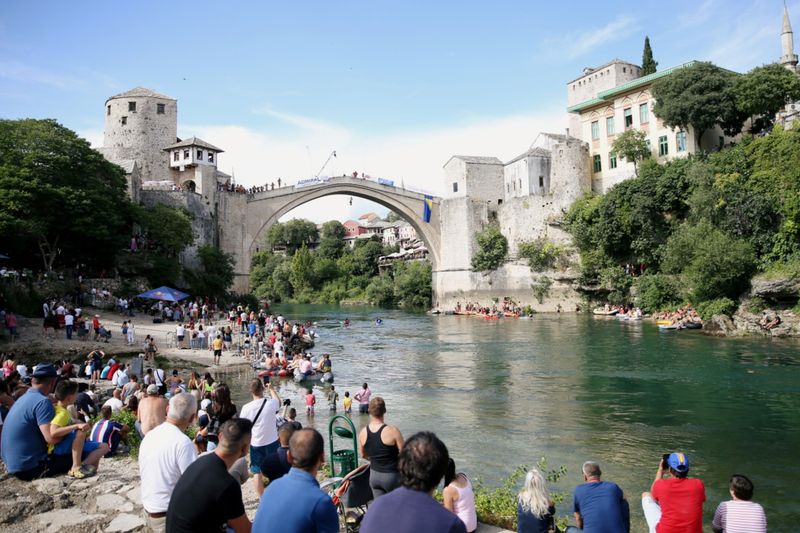
Today, Stari Most stands as one of the Balkans’ most photographed landmarks, attracting millions of visitors annually who come to witness this symbol of resilience firsthand. Social media fills with images of travelers posing on the bridge, sharing its story with global audiences.
The bridge has inspired countless books, documentaries, and artistic works about reconciliation and the power of cultural heritage. Its story resonates particularly strongly in regions experiencing their own conflicts or recovery processes.
Visitors consistently describe feeling moved by the bridge’s history and what it represents. Many leave with a deeper understanding that division and hatred aren’t permanent, that communities can choose to rebuild together, and that sometimes the most powerful monuments are those that rise from the ashes of destruction.

